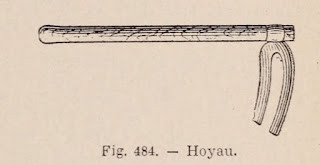Practically every day in the French Republican Calendar is named after a plant, animal, mineral, or farm tool, collectively known as the “rural calendar.” Today, Décadi, Brumaire 20, is being reported on Twitter, er, X, and the various apps as being “Grub-hoe” day. Grub-hoe? What is that? How is it different from a regular hoe?
2023/12/11
2023/12/10
2023/12/05
Romme’s calendar
There were historically two French Republican calendars:
- Gilbert Romme's original calendar, which was the only one legally recognized, began each year on the day of the autumn equinox, causing leap years to occur haphazardly, according to Romme’s method.
- The reformed calendar, which never reached the National Convention, began each year according to fixed mathematical rules proposed by Jean Baptiste Delambre, with leap years occurring on a regular schedule, similar to the Gregorian calendar. The reason that the reformed calendar did not reach the Convention was that on that same day, Romme was sentenced to the guillotine and committed suicide.
2023/12/03
Stardates explained
I ran across this video that sounds a lot like me. It talks about different methods to produce stardates in the present.
Reformed conversions
2023/12/02
Swatch Internet Time
Swatch no longer promotes its Internet Time beats, but I found an archived version of its Swatch Internet Time page from 2002. See the brochure.
2023/11/30
2023/11/28
Lavoisier
Antoine-Laurent de Lavoisier, in a convocation letter to the members of the Commission for weights and measurements, for October 13, 1793, (22 vendémiaire an II) expressed himself in terms of the new regulations: “We remind you, dear citizen, that the Commission for weights and measurements shall meet, from now on, on the 2nd and 5th and 8th of each decade, at 7 decimal hours exactly (4 hours 48 minutes in the afternoon in the old style).”
An interesting use of decimal time. Note that he gave an exact decimal time, then translated that into “old style,” rather than the other way around. He also refers to the décade, rather than the week. Meetings are to be held every third day with a three-day weekend.
This was when decimal time and the calendar were first introduced. He died in prison shortly after that, in the unfortunate snuffing of a leading light of science, another victim of the times.
2023/11/11
Current stardates
Captain’s log, stardate 78862.1.
Amongst the date and time formats I’ve supported on this site is the current stardate. But since there is no consensus or single version that is accepted, I’ve gone back and forth with which to use. Initially, I used Modified Julian Dates, but then I started using TrekGuide’s formula, as that was consistent with when TNG, DS9, and Voyager episodes aired, but those episodes haven’t aired for decades.







